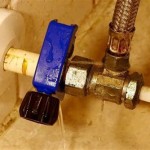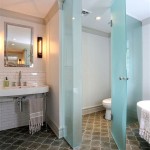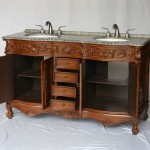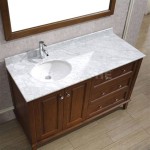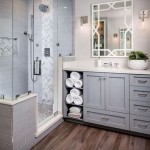Essential Aspects of Bathroom Vanity Plumbing Installation
Installing a bathroom vanity plumbing system is a crucial aspect of any bathroom renovation. It ensures proper water supply, drainage, and overall functionality. There are several essential aspects that must be carefully considered to ensure a successful and efficient installation.
Water Supply Lines
Water supply lines are responsible for delivering water to the vanity faucets. They can be made of copper, PEX, or CPVC. The size and type of lines used should соответствовать the specific requirements of the faucets and fixtures. Proper installation includes ensuring secure connections, avoiding kinks or bends, and installing shut-off valves for easy maintenance.
Drain Lines
Drain lines carry wastewater away from the vanity sink and fixtures. They are typically made of PVC or ABS plastic. The diameter and slope of the drain lines are critical to ensure proper drainage. They must be properly connected to the drainpipes and sealed to prevent leaks. Additionally, installing a P-trap helps prevent sewer gases from entering the bathroom.
Faucet Installation
Faucet installation requires attention to detail. The type of faucet, whether single-handle or two-handle, must be compatible with the pre-drilled holes in the vanity top. Faucets should be securely mounted, with proper tightening of nuts and washers. Flexible supply lines are typically used to connect the faucets to the water supply lines, ensuring flexibility and leak-free operation.
Pop-Up Drain Assembly
Pop-up drain assemblies control the flow of water in and out of the sink. They consist of a stopper that opens and closes the drain. The assembly should be properly installed, with the lift rod securely attached to the stopper and the stopper fitting snugly in the drain hole. Proper alignment is essential to prevent water from leaking around the stopper.
Vanity Light Fixture
Bathroom vanity lighting provides illumination for the vanity area. It can be installed above or next to the mirror. Electrical connections must be made according to code, with proper grounding and use of junction boxes. The fixture should be securely mounted and the bulbs properly installed. Electrical work should only be performed by a qualified electrician.
Shut-Off Valves
Shut-off valves are essential for maintenance and emergency situations. They allow for easy isolation of the water supply to the vanity. Valves should be installed under the sink and accessible in case of leaks or repairs. Proper installation involves securing the valves to the water supply lines and ensuring that they operate smoothly.
Conclusion
Bathroom vanity plumbing installation involves several essential aspects that require careful attention to detail. By considering these factors, homeowners can ensure a functional, leak-free, and aesthetically pleasing vanity system that meets their specific needs.

Bathroom Sink Plumbing Installation

Bathroom Sink Plumbing Installation Diy Montreal

Installing A Vanity Bathroom Vanities Bath Installation Kitchen And The Edge How To Install

How To Install A Bathroom Vanity And Sink

How To Plumb A Bathroom With Multiple Plumbing Diagrams Hammerpedia

Installing A Vanity Bathroom Vanities Bath Installation Kitchen And The Edge How To Install
How To Install Bathroom Sink Drain Queen Bee Of Honey Dos

How To Install A Vessel Sink Faucet

Bathroom Sink Plumbing Diagram Diy Sinks Drain Kitchen Remodel

How To Install A Bathroom Vanity
Related Posts
